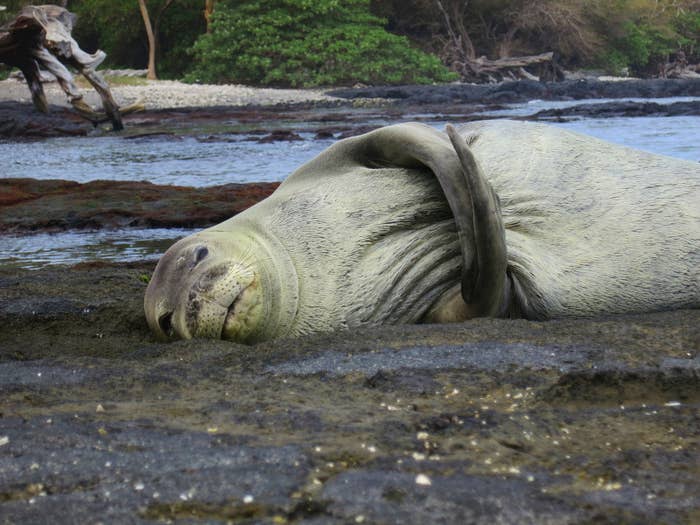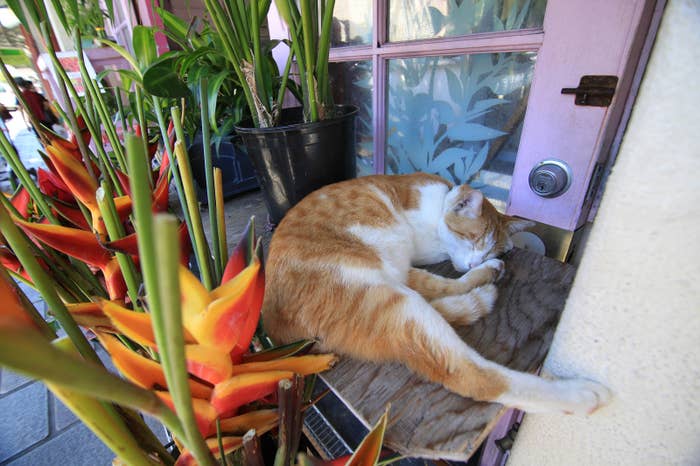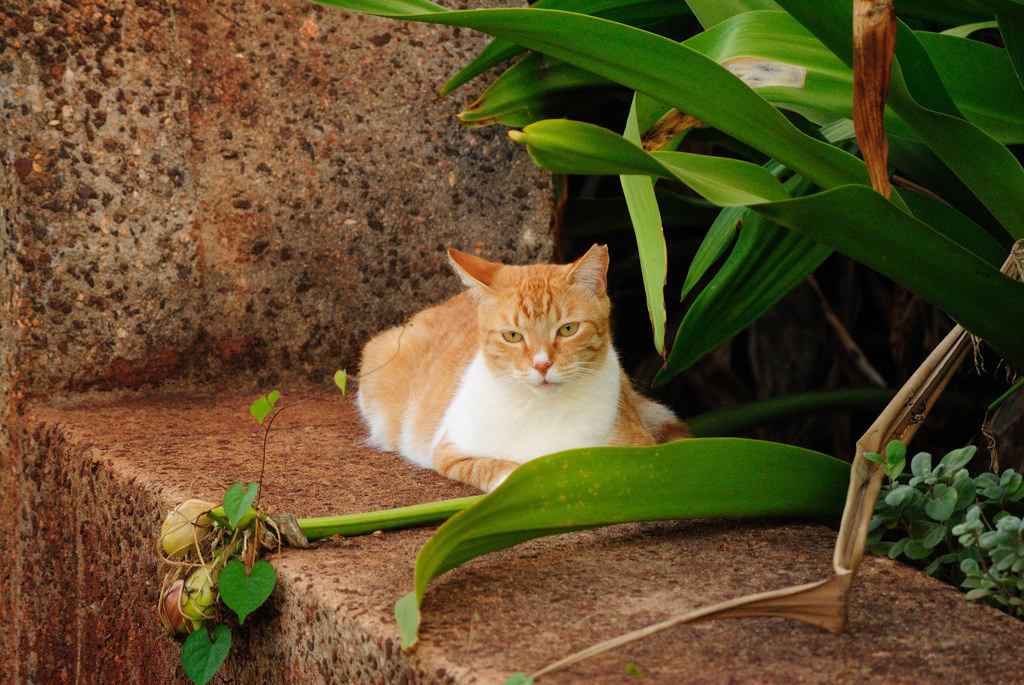
HONOLULU — Two animal advocate groups have been pitted against each other in Hawaii after researchers found that the poop from thousands of feral cats living on the islands has been killing Hawaiian monk seals, spinner dolphins, and native birds. As a result, some conservationists have advocated for euthanizing the abundant stray cats in Hawaii, causing an outcry from cat lovers.
Cat feces can carry toxoplasmosis, a parasitic disease that can only reproduce in the animal. The parasite can live in the ground or water for up to 18 months and can cause illness or death in other animals, including humans. Pregnant women are advised by the Center for Disease Control not to change cat litter as they are at risk of passing the disease to their unborn child.

The first monk seal death attributed to toxoplasmosis was discovered in 2004, according to the National Oceanic And Atmospheric Administration. The disease has killed at least eight monk seals, a critically endangered species with just 1,100 remaining in the Hawaiian Islands. Monk seals become infected by consuming the parasite from the water or by consuming prey that has been contaminated.
"We knew that animals were being exposed to toxoplasmosis but it's only recently that number seems to be increasing," Charles Littnan, the Lead Scientist at NOAA's Hawaiian Monk Seal Research Program, told BuzzFeed News.
Littnan said at least three of the eight monk seals died from the disease in the last year alone and there are likely more but their carcasses have not been recovered or were so decomposed they were unable to be tested.
Last year, a beloved monk seal named Uilani, which means Heavenly Creature in Hawaiian, died at age 2 from the disease. Uilani was well-known for regularly greeting a group of paddlers in the ocean, but in November they saw her floating near the water's surface and called NOAA officials who tried to rescue the seal. But with no known cure for the disease, Uilani died within 96 hours. The paddling club named a canoe after Uilani and held a ceremony to scatter her ashes.
The disease has also been found in other animals, killing nene geese, the endangered state bird, and Hawaiian crows, which are now extinct in the wild. In California, toxoplasmosis has been carried into the water from runoff, killing sea otters.
"Toxoplasmosis is the number one disease threat to monk seals in the main Hawaiian Islands," Littnan said. "As things exist right now, Hawaii's wildlife is losing out."
The Hawaiian Humane Society estimates 300,000 stray cats are roaming around on Oahu, which has a population of almost 1 million people. The report also found that 17% of Oahu residents feed stray cats.
The animal welfare group advocates for a program where animals are trapped, neuterer or spayed, and then released back into the wild. The Hawaiian Humane Society, however, is only able to sterilize about 7,000 cats a year.
Scientists with NOAA and the Department of Land and Natural Resources advocate for a tougher approach, citing the dwindling number of native animals in Hawaii. They say some — or possibly all — stray cats on the islands should be euthanized, while enforcing all cat owners keep their pets inside and residents stop the feeding of stray cats.

State lawmakers heard a proposal in February to ban feeding cats on state lands, which was supported by DLNR, but was abandoned after an outpouring of testimony against it. Cat advocates say starving strays does nothing to colonies, as they are aggressive animals that will figure out how to get food elsewhere.
Hawaiian Humane Society President and CEO Pamela Burns wrote a letter opposing the state Senate bill, saying the use of labels such as native and invasive creates a "hierarchy in which the protection of certain animals comes at the suffering of others."
But despite the death of the bill, officials are still seeking to minimize the threat to endangered monk seals.
"The ultimate goal is to actively manage the feral cat problem, so that there are ultimately fewer cats in the wild," Littnan said. "That will be a multi-prong approach that will look at responsible pet ownership, stopping abandonment, and working with people to come up with effective strategies for cats that are already in the wild."
